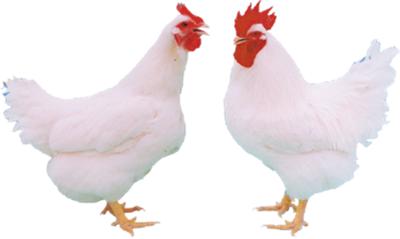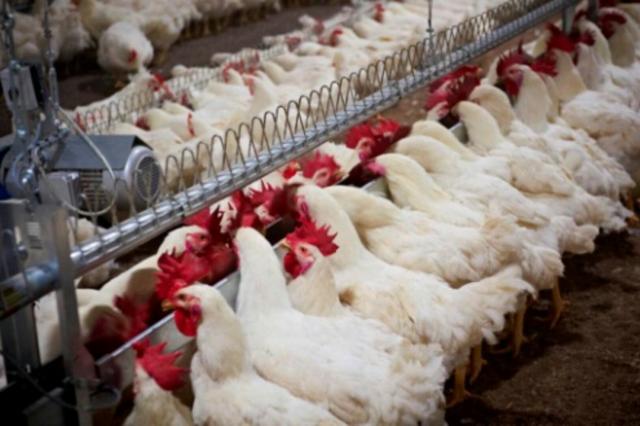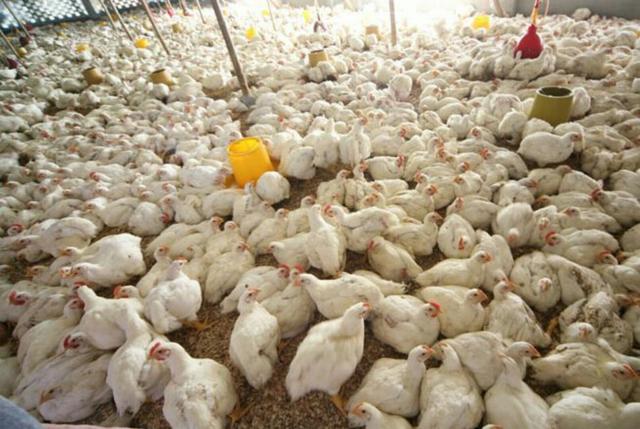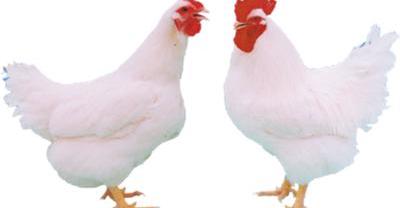Ten key points for successful breeding of broilers
Broilers are characterized by fast growth, high feed efficiency and short breeding cycle, which can be listed in 7 to 9 weeks. Broilers grow fast in the early stage, which is an important feature of broilers. Rich farmers share their breeding experience with Xiao Zhang.
1. Enter the chick. Chicks must come from healthy and prolific parents with commercial hybrids. Breeder chickens must be free from white dysentery and mildew. The chicks are strong, lively and neatly developed. Before entering the chick, you must control the temperature in the house in advance. An appropriate increase in the temperature on the first day can ensure the survival rate. After entering the chick, you can ensure that you can drink clean and suitable water in time. The first meal should be two hours after drinking water, if the hatchery is far away from the farm, liquid vitamins or 5% glucose should be added to the water, which is conducive to the recovery and growth of chicks. There is no restriction on feeding for the first time, allowing chicks to eat freely. Feed should not be added too much, and the distance between feed and drinking water should be kept properly.
2. The culture density should not be too large, and should not exceed 15 per square meter. Excessive density is easy to cause air turbidity, bad feathers, slow growth, pecking malpractice has occurred.
3. Temperature control. The ability of temperature regulation of chicks is very poor, so it is important to provide suitable temperature artificially. Chicks into the house should be controlled at 35 degrees Celsius, the temperature is too low, chicks are not lively, affecting feeding. It is advisable to reduce 3 degrees Celsius per week from the second week. After the fifth week, it is appropriate to keep the temperature of the chicken house at 23 degrees Celsius until it is out of the pen.

4. Humidity control. The humidity should be kept at 65% in the first week, when the temperature is too high and the humidity is too low, which can easily lead to dehydration and affect the development of chicks. At the same time, we should adjust the humidity according to different seasons, and observe that the chicks eat, move and sleep normally.
5. The adjustment of ambient air quality in the chicken house. We generally use ventilation to improve the air quality in the house, the purpose is to remove ammonia, carbon dioxide and other harmful gases. Pay attention to guard against the formation of thieves during ventilation. Ventilation should not allow the temperature to be too low, and organic coordination is needed. The wind speed can be controlled at 0.2 meters per second.
6. Light management. The purpose of artificial light replenishment is to ensure the feeding and growth of broilers. The chicks should replenish light continuously for 48 hours two days before entering the house. The third day began to be reduced to 23 hours, and the lights were turned off for an hour to keep the chicks dark, allowing the chicks to adapt to occasional power outages and paying attention to the death caused by the chicks huddled together during power outages. The intensity of light should be gradually diminished, with a guarantee of 3 watts per square meter and 0.75 watts per square meter after the third week. Intermittent illumination is now used in some places, and the effect is good. Turning off the light after 2 hours of light can obviously increase the economic benefit. This can promote the feeding of broilers, which is good for improving the growth rate, which requires the use of farmers with good environmental control of the chicken coop.

7. The breeding cycle of broiler chickens is short, and once the disease occurs, it must be controlled quickly, otherwise it will not be able to recover before sale, which requires us to focus on prevention. In the management, we should pay attention to the inspection and adjustment of the temperature, humidity and air quality and environmental conditions of the chicken house, so as to eliminate the stress caused by improper management. The epidemic prevention work of broilers must be in place, and the epidemic prevention procedures must be suitable for the local epidemic investigation. Broiler coccidiosis prevention must start from the management, strict control of humidity, onset time detection of clear feces every day, now generally online breeding, can be achieved. This is only to eliminate the environmental conditions for the development of coccidial oocysts.
8. Broilers grow fast, the feeding cycle is short, and the feed must be high in energy and protein, vitamins, minerals and other trace components. When energy and protein are insufficient, the growth is slow and the feed utilization rate is low. Lack of trace substances, the emergence of a variety of metabolic disorders. The protein content of broilers should be more than 23% in the early stage and 21% in the later stage.

9. Broiler chickens are generally fed freely, and the number of times of adding feed is not less than four times a day. Frequent feeding can stimulate the appetite of chickens and increase food intake. Each feeding can not exceed 1/3 of the feed trough, more than the hook is easy to occur, easy to waste feed, increase the cost of breeding.
10. Fresh and clean water source is an important condition to ensure the growth and development of broilers. In general, the amount of drinking water is 3 times the amount of food intake. It's higher in summer. The quality of water can ensure to reduce the incidence of E. coli, can reduce the occurrence of intestinal diseases, conducive to healthy growth, conducive to the uniformity of chickens.
- Prev

Culture methods and matters needing attention of fire sacrifice
Fire sacrifice, also known as autumn fire lotus, is a succulent plant of crassulaceae, clumpy, hairy leaves, like the environment with sufficient light, sufficient light can avoid plant overgrowth.
- Next

Harm of moss in crayfish culture
Moss (shot by Hong Wei) Moss, also known as green mud moss, is a general term for green algae such as Spirogyra, Hydrodictyon, Double Star algae, and Cyanobacteria such as Microcystis and Cystis...
Related
- On the eggshell is a badge full of pride. British Poultry Egg Market and Consumer observation
- British study: 72% of Britons are willing to buy native eggs raised by insects
- Guidelines for friendly egg production revised the increase of space in chicken sheds can not be forced to change feathers and lay eggs.
- Risk of delay in customs clearance Australia suspends lobster exports to China
- Pig semen-the Vector of virus Transmission (4)
- Pig semen-the Vector of virus Transmission (3)
- Five common causes of difficult control of classical swine fever in clinic and their countermeasures
- Foot-and-mouth disease is the most effective way to prevent it!
- PED is the number one killer of piglets and has to be guarded against in autumn and winter.
- What is "yellow fat pig"? Have you ever heard the pig collector talk about "yellow fat pig"?

